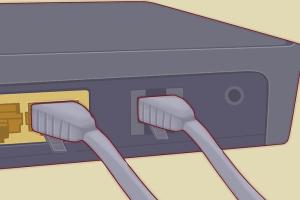Ultimate Guide to Installing Broadband: Step-by-Step Process for Fast Internet

-
Quick Links:
- 1. Introduction
- 2. Understanding Broadband
- 3. Choosing Your Broadband Provider
- 4. Pre-Installation Checklist
- 5. Installation Process
- 6. Configuring Your Broadband
- 7. Optimizing Your Connection
- 8. Troubleshooting Common Issues
- 9. Case Studies
- 10. Expert Insights
- 11. FAQs
1. Introduction
Broadband internet has become an essential utility in modern homes, providing connectivity for work, education, and entertainment. This guide will walk you through the process of installing broadband in your home—regardless of whether you're tech-savvy or a complete beginner.
2. Understanding Broadband
Broadband is a high-speed internet connection that is always on. It allows multiple devices to connect simultaneously without interruption. Understanding the types of broadband, including DSL, cable, fiber-optic, and satellite, can help you make an informed choice.
Types of Broadband
- DSL: Digital Subscriber Line uses telephone lines for internet access.
- Cable: Utilizes coaxial cables, typically offering higher speeds than DSL.
- Fiber-Optic: Uses light signals for incredibly fast speeds and reliability.
- Satellite: Provides access in remote areas but may have higher latency.
3. Choosing Your Broadband Provider
Choosing the right broadband provider involves comparing plans, speeds, and customer service. Here are some tips:
- Research local providers and their coverage.
- Compare speeds and pricing.
- Check customer reviews and support options.
4. Pre-Installation Checklist
Before you start the installation process, make sure you have the following:
- Internet service agreement with your chosen provider.
- Broadband modem and router (if not provided by the ISP).
- Coaxial, Ethernet, or phone cables, depending on the type of broadband.
- Power supply for the modem and router.
- A computer or device for configuration.
5. Installation Process
The installation process may vary based on the type of broadband service. Here, we’ll outline the steps for the most common types: DSL, Cable, and Fiber-Optic.
5.1 Installing DSL
- Connect the DSL modem to the phone line using the DSL cable.
- Plug the modem into a power outlet.
- Use an Ethernet cable to connect the modem to your computer.
- Follow the ISP’s instructions to access the setup page.
5.2 Installing Cable
- Connect the cable modem to the coaxial cable outlet.
- Plug the modem into a power source.
- Connect your router to the modem using an Ethernet cable.
- Access the setup page to configure your internet settings.
5.3 Installing Fiber-Optic
- Connect the fiber-optic modem to the fiber line.
- Power on the modem.
- Connect your router using an Ethernet cable.
- Follow the provider’s instructions for activation.
6. Configuring Your Broadband
Once hardware installation is complete, you need to configure your broadband. This generally involves:
- Accessing the modem/router interface through a web browser.
- Entering the username and password provided by your ISP.
- Configuring Wi-Fi settings, including SSID and password.
- Saving changes and rebooting the modem/router.
7. Optimizing Your Connection
After installation and configuration, consider the following tips to optimize your connection:
- Place your router in a central location.
- Use a wired connection for devices that require high bandwidth.
- Regularly update your firmware.
- Limit the number of connected devices during peak usage times.
8. Troubleshooting Common Issues
Sometimes, issues may arise post-installation. Here are some common problems and solutions:
- No Internet Connection: Restart your modem and router.
- Slow Internet Speed: Check for bandwidth hogs on your network.
- Wi-Fi Connectivity Issues: Adjust router placement or change Wi-Fi channels.
9. Case Studies
Case studies can provide real-world examples of broadband installation. For instance, a family in a rural area opted for a satellite broadband service due to unavailability of DSL or cable. They faced challenges related to latency but found that with proper configuration, their connection met their streaming and gaming needs effectively.
10. Expert Insights
According to experts in the field, the key to a successful broadband installation lies in understanding your needs and selecting the right technology. Dr. Jane Doe, a telecommunications expert, suggests, “Always assess your internet usage before choosing a plan. What works for a casual user may not suffice for a gamer or remote worker.”
11. FAQs
What is the fastest type of broadband?
Fiber-optic broadband is currently the fastest option available, offering speeds up to 1 Gbps or more.
Can I install broadband myself?
Yes, most broadband installations are designed for easy self-installation. Follow the guide provided by your ISP.
How long does it take to install broadband?
The installation time can vary but typically takes between 30 minutes to 2 hours, depending on the type of service.
What do I do if my internet is slow?
Check if there are too many devices connected, restart your modem, and consider upgrading your plan if needed.
Do I need a technician for installation?
In most cases, a technician visit is not necessary, but if you encounter issues, your ISP can send a technician.
Can I use my own router?
Yes, many ISPs allow you to use your own router, but make sure it’s compatible with their service.
What is the difference between download and upload speed?
Download speed measures how quickly you can receive data, while upload speed measures how fast you can send data.
What equipment do I need for broadband installation?
You will typically need a modem, router, and cables specific to your broadband type (DSL, cable, or fiber).
Is it safe to install broadband myself?
Yes, self-installation is generally safe and designed for average users, but follow the instructions carefully.
How can I improve my Wi-Fi signal?
Position your router in a central location, minimize obstacles, and consider using Wi-Fi extenders if necessary.